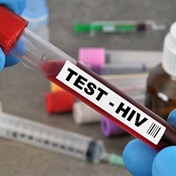The World Health Organization (WHO) and the specialised agency UNAIDS declared that millions of lives could be saved if circumcision were widely and safely practised.
They issued guidelines at a press conference in Paris following a debate among experts, health officials and grassroots groups in Geneva on March 6-8.
Significant step forward
"The recommendations represent a significant step forward in HIV
prevention," said Kevin de Cock, director of the WHO's HIV/Aids
Department.
"Countries with high rates of heterosexual HIV infection and low rates of male circumcision now have an additional intervention which can reduce the risk of HIV infection in heterosexual men," said de Cock.
"Scaling up male circumcision in such countries will result in immediate benefit to individuals," he said, adding, however: "It will be a number of years before we can expect to see an impact on the epidemic from such investment." The spur for the recommendation has been two trials conducted in Uganda and a third in South Africa.
These studies found that men who had been circumcised reduced the risk of HIV infection by between 51 and 60 percent at least, as compared with uncircumcised counterparts.
Efficacy well proven
"The efficacy of male circumcision in reducing female-to-male
transmission of HIV has been proven beyond reasonable doubt. This
is an important landmark in the history of HIV prevention," said
the WHO and UNAIDS.
According to figures published in Public Library of Science (PLoS) Medicine that were cited in the UN document, 5.7 million new cases of HIV infection and three million deaths could be prevented over 20 years if male circumcision were universally practised in sub-Saharan Africa.
The two agencies made these points:
- Circumcision reduces, but does not eliminate, the risk of
infection for the man in the context of heterosexual intercourse.
There is no evidence yet as to whether circumcision has any impact on the risk of infection for the woman, on the risk among men who have sex with other men, or on the risk for heterosexual anal intercourse.
- Circumcision should be a part of a prevention package that
also includes safe-sex counselling and access to condoms for both
partners.
"Communities, and particularly men opting for the procedure and their partners, require careful and balanced information and education materials that underline male circumcision is not a 'magic bullet' for HIV prevention but is complementary to other ways of reducing risk of HIV infection," the guidelines warn.
- Circumcision has to be carried out with confidentiality and the informed consent of the male and without coercion or discrimination. Countries should also emphasise that male circumcision has no connection with female genital mutilation, a practice with many adverse physical and psychological impacts and with no demonstrated medical benefits.
- Circumcision should be promoted "with full adherence to medical ethics" but in a "culturally appropriate manner." For instance, traditional practitioners who carry out circumcision in a ritual to symbolise a child's transition to adulthood should be consulted to help ensure support for a circumcision campaign.
- Countries should carefully assess their needs in funding, trained personnel and medical equipment before promoting a circumcision campaign, to avoid botched operations.
More than 25 million people have died of Aids since the disease was first detected in 1981. At the end of 2006, an estimated 39.5 million people had Aids or HIV, and 4.3 million became newly infected with the virus that year.
The clinical reason for circumcision's preventive effect is still being investigated.
One theory is that the foreskin has a very thin lining and suffers minor abrasions during intercourse, making it easier for the human immunodeficiency virus (HIV) to enter the man's bloodstream. Another is that the foreskin is rich in Langerhans cells, whose surface is configured in such a way that the AIDS virus readily latches on to them. – (Sapa-AFP)
Read more:
HIV/Aids Centre
March 2007




 Publications
Publications
 Partners
Partners










